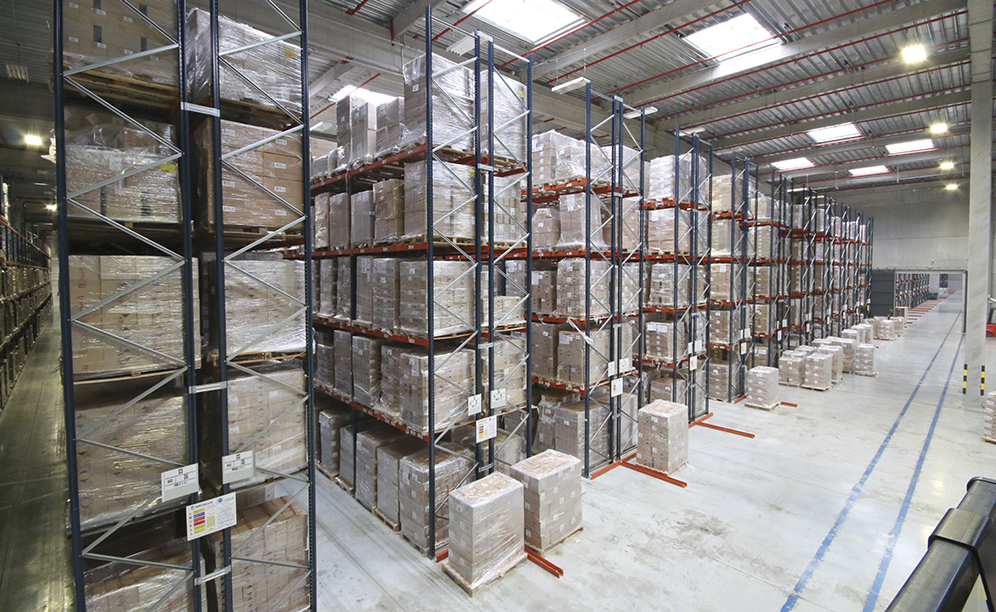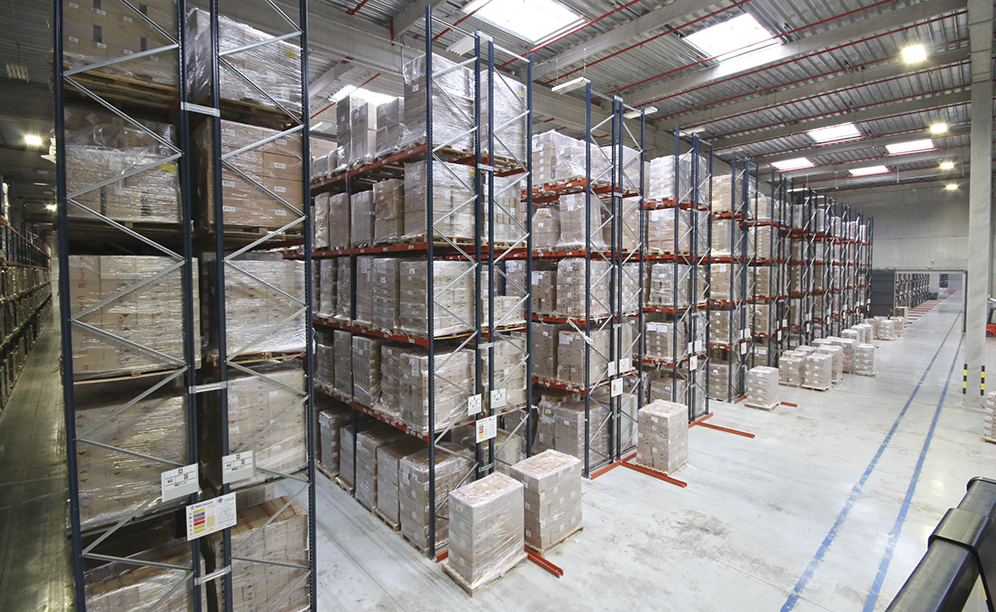
The SAGA warehouse can accommodate more than 42,000 pallets

A complete picking circuit for SAGA's warehouse in France

With a total capacity that exceeds 42,000 pallets, in the warehouse that SAGA owns in Saint-Priest the area specified for picking plays a prominent role since this business requires great agility to meet the demands of its network of offices, which are present in more than 100 countries. This picking area, consisting of conventional and live pallet racking, satisfies all of SAGA’s needs while reducing operating costs.
SAGA’s warehouse is split up into five independent bays that are isolated one from the other as a fire safety measure. Each zone is set up with conventional pallet racking, the only difference being that trilateral forklifts serve bays 1, 2 and 3, while the remaining two function using reach trucks.
In addition, the last two bays are used to warehouse reserve products that are prepared in the area allocated for picking, and installed in bay five.
Since the trilateral machines only work inside the storage aisles, other forklifts, in particular pallet trucks, are responsible for depositing and extracting the pallets from the ends of the aisles. Racks have anchored positioners in the floor so pallets stay centred.
These elements are not required in racks served by reach trucks. Nevertheless, they placed protectors on the sides and uprights to prevent potential blows, as seen in the photograph on the right.
1. The automatic box former creates the needed box size from flat cardboard of various formats.
2. The formed boxes accumulate in a "U" shaped circuit and are introduced into the main circuit when required. Subsequently, an identification label is automatically placed.
3. The live picking racks, located at the front of the circuit on both sides of the two aisles, allow more than one hundred A type SKUs to be housed spread throughout 48 bays. Below one of the picking racks and between two storage levels, the continuous conveyor circulates for already completed orders. Next to this is the other non-automated conveyor that functions as a prep table.
4 and 5. The conveyor circuit runs along the two previous aisles. One of the models has a hinged section that flips open, allowing the passage of operators and carts to the next zone.
6. In this second zone type B and C products are prepared. For this reason, 36 live pallet racking bays and 112 double conventional pallet racking bays are set up.
7. Once orders are prepared, they are driven to the verification and weight control station, where they are checked for errors and completeness.
8. In the packaging zone, they place and protect products before passing them through the various machines that close and seal the boxes. Then, the delivery notes to be included with the boxes are printed and the rest of labels that are required for its dispatch adhered by hand.
9. This area has 12 automatic order classification channels, which correspond to different routes.
The picking area consists of the following parts:
Each time a new order is launched, the WMS (Warehouse Management Software) tells the box accumulator the quantity and size of box needed.
Subsequently, the automatic labeller sticks the respective bar code labels to the box. The operator picks up the box and reads its code using the RF terminal. The system then shows which and how many goods should be picked.
The warehouse is divided into several areas and each of them has an assigned operator. When the first operator has prepared their part, they pass the box to the next to continue the process. As orders are completed or boxes are filled, they are placed on the automatic conveyor that passes along the racking interior.
Although the continuous circuit is "U" shaped, boxes that need medium and low turnover products are diverted to an accumulation conveyor, awaiting the operator assigned to this area to start preparing those SKUs.
The operator in the B and C zones uses a cart that handles six boxes from six different orders.
The process ends with the manual transfer of these boxes to the corresponding pallets and their subsequent dispatch.
The large capacity of the warehouse, its zoning and specialisation, as well as the location of the loading docks and the versatility gained through the storage and picking systems installed, allow SAGA to offer an efficient and speedy service to its customers.
| SAGA warehouse | |
|---|---|
| Storage capacity:: | 42,410 pallets |
| Maximum pallet weight:: | 800 kg |
| Pallet size:: | 800 x 1,200 mm |
| Warehouse height:: | 9 m |
Ask an expert